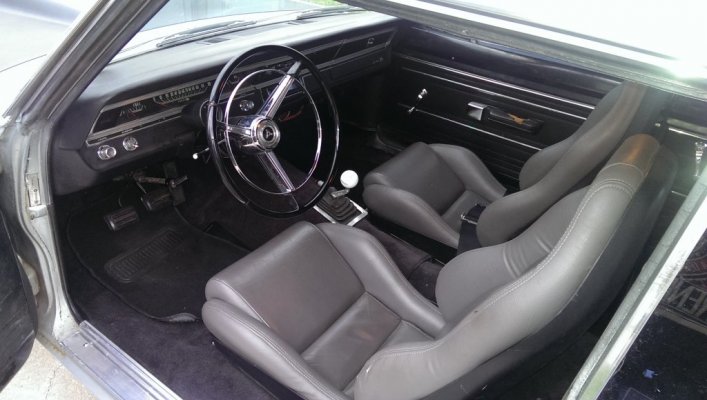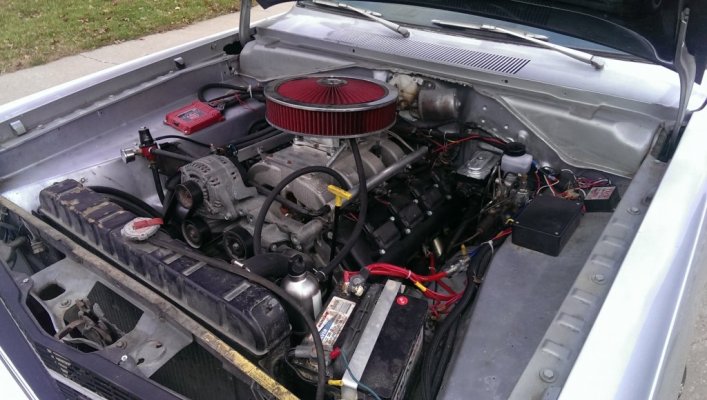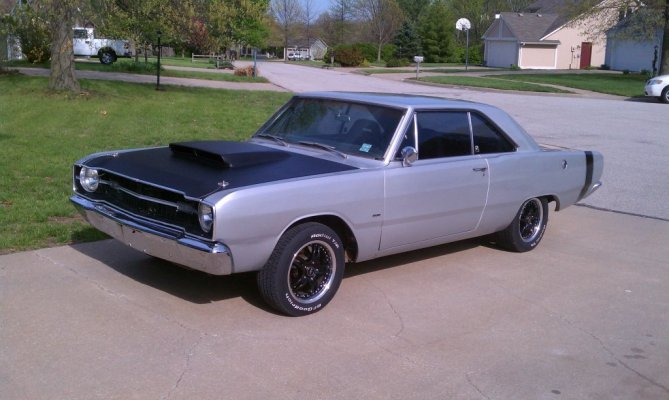Lesson 1 - 3.73s Were Not Ideal For Me
I originally chose 3.73 gears for drag racing. I’d been using 3.55s with a 26” tire (Hoosier 335/30-18 DR2) for a few years, and I always felt like the car was just starting to pull really hard after I went through the traps in the quarter mile (trap speeds usually around 128-131 MPH). I thought the 3.73s would let me take advantage of this perceived seat-of-the-pants feeling and also help get the car off the line a little easier.
I only got one pass in on the 3.73s before I broke an OS Giken output stub, so I clearly can’t draw any firm conclusions, but I wasn’t all that impressed with what I saw from that single pass. Below are two time slips of similar runs under similar conditions (similar DA’s, nearly identical race weight, same tires, same tire pressures, etc.) – one with 3.55s, and one with 3.73s:
You must be registered for see images attach
What stuck out to me the most were the trap speeds – they were all noticeably down with the 3.73s, especially in the 1/8th mile. ~100 MPH is usually what my car would trap in the 1/8th when I was running 3.07s. On the positive side, the 3.73s gave me the best 60’ time I’ve ever cut on a first pass of the night, and also the best first pass e.t. I’ve ever had. I really wish I had been able to get some more passes in to get a better idea of the benefits/drawbacks.
60-130 times were also noticeably down (disregard the Dragy reported density altitudes – the DA values listed under the screen caps were from my Kestrel 5100 weather meter, and should be considered the truth source):
You must be registered for see images attach
Shift speed looked about the same between the two, but to be fair, the 60-130 time with the 3.55s was on my fourth pass of that evening, which is usually when I do my best driving (and that
was my personal best 60-130 time). It still takes the same number of shifts to cover 60-130 with the 3.73s, but as expected, the shift points have clearly moved down in the MPH range, putting the 3-4 shift right in the middle of going through the 1/8th mile traps. This tracks with what my gear ratio calculator told me had I actually paid attention to the numbers:
You must be registered for see images attach
Keep in mind that my rev limiter is set to 6,600 RPMs and my shift light flashes at 6,300 RPMs, so I’m
estimating that my shifts happen around 6,400-6,500 RPMs factoring in my reaction time from when the shift light flashes until I actually execute the shift.
That could be fixed pretty easily, however, by switching back to a 28” tire (e.g., a 345/35-18 Mickey Thompson ET Street S/S):
You must be registered for see images attach
As with anything, there are pros and cons for each.
26” Hoosier DR2
Pros:
- One of the lightest weight Viper-sized drag radials out there (26 pounds per tire)
- Very sticky tire (once properly heated)
Cons:
- Short sidewall has little to no flex (more drivetrain shock)
- Takes a solid 2nd gear burnout to really heat the tires up
- Not DOT street legal (no tread whatsoever)
- Looks goofy on a Gen 3/4 Viper (huge rear wheel gap)
28” Mickey Thompson ET Street S/S
Pros:
- Requires only a light burnout to make them sticky
- DOT street legal
Cons:
- Sidewall flex makes the car feel a bit unstable at times
- Heavy (38 pounds per tire)
If you can tolerate the extra 24 pounds of rotating mass, 3.73 gears with a 345/35-18 drag radial might be a nice choice for drag racing. The extra sidewall would certainly be welcome for keeping the drivetrain shock to tolerable levels during the launch. Would it have kept me from breaking an OS Giken output stub? Who knows, but probably not.
But for my setup and my goals with the car, the 3.73s weren’t the right choice. They are also way too much gear on the street unless you want to run a drag radial at all times. If you like spinning tires and going nowhere fast, however, 3.73s might be for you.





